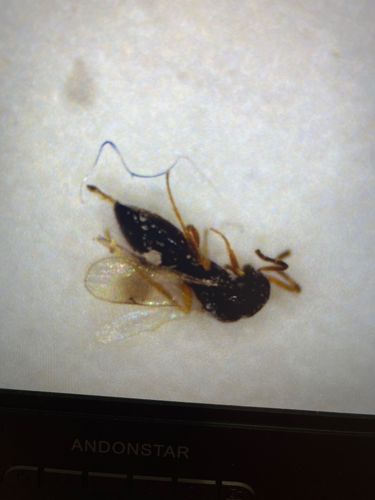Parasitic Wasp
Scientific Name: Chalcidoidea (Superfamily)
Order & Family: Hymenoptera, various families within Chalcidoidea (e.g., Pteromalidae, Encyrtidae)
Size: Typically 1-3 mm, though some species can be smaller (0.2 mm) or larger (up to 15 mm). The insect in the image appears to be on the smaller end.

Natural Habitat
Highly diverse; found in nearly all terrestrial habitats where their host insects are present, including agricultural fields, forests, gardens, and urban areas. Many species are also found indoors where their hosts (e.g., pantry moths, house flies) are present.
Diet & Feeding
Adult parasitic wasps typically feed on nectar, honeydew, or pollen. The larvae are parasitoids, meaning they develop by feeding on or within another insect (the host), eventually killing it. Hosts include eggs, larvae, or pupae of other insects such as aphids, scale insects, whiteflies, caterpillars, beetles, and flies.
Behavior Patterns
Female parasitic wasps locate hosts using chemical cues (volatile compounds released by the host or its food source). Once a host is found, the female lays one or more eggs on or inside it. The developing larvae consume the host from the inside out. Adults are often active fliers and can be observed searching for hosts or sources of nectar. Many species exhibit specific host-finding behaviors and can be very effective biological control agents.
Risks & Benefits
Generally beneficial insects, as they are natural enemies of many agricultural and household pests. They pose no direct risk to humans (they do not sting humans) and are not considered pests themselves. Their primary benefit is pest control, reducing the need for chemical pesticides in agriculture and maintaining ecological balance in natural systems. They are widely used in biological control programs.
Identified on: 9/5/2025